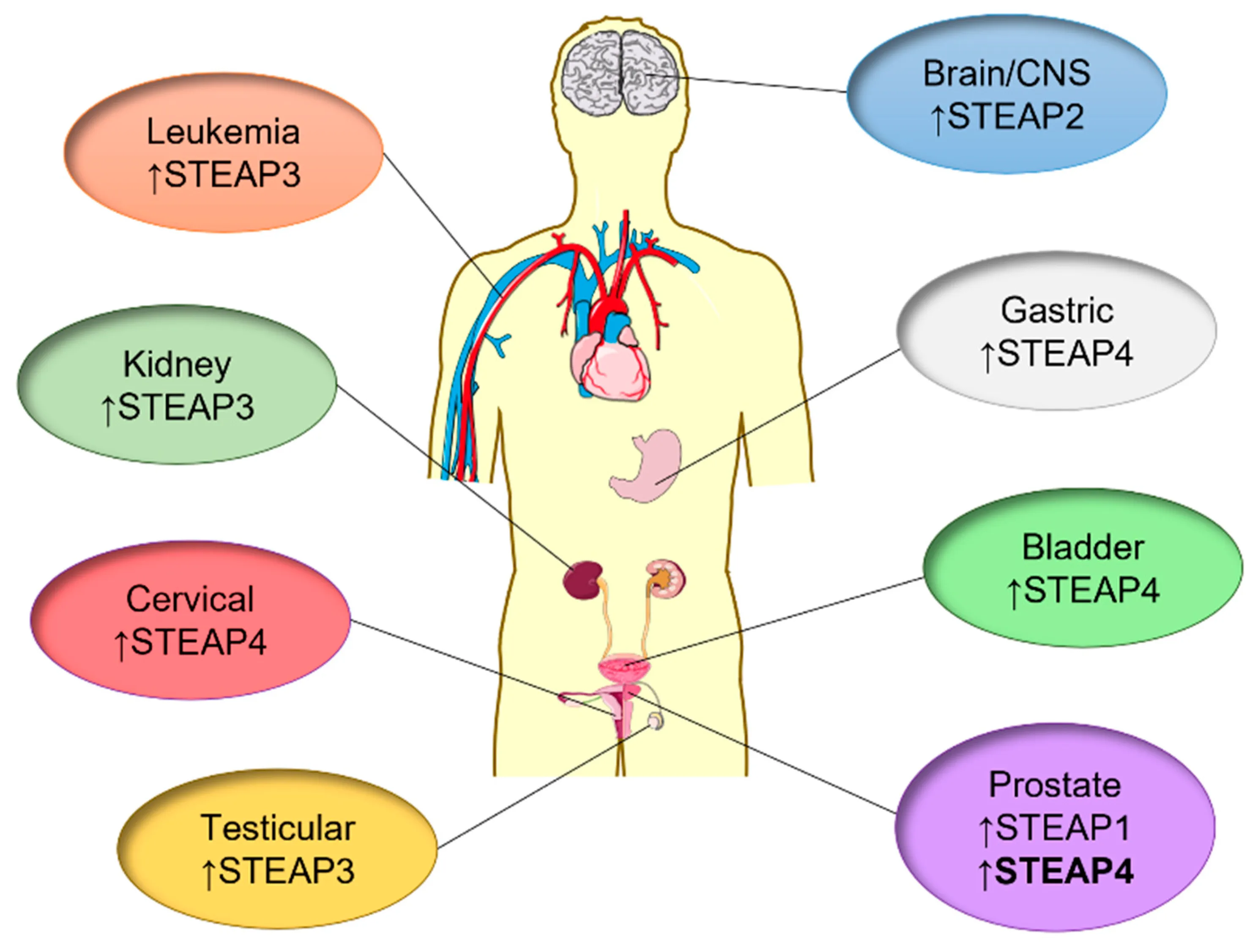STEAP Targets in Focus: Emerging Therapies Across Cancer and Chronic Diseases
The Rising Promise of STEAP Targets in Modern Medicine
As low-hanging fruit in drug discovery diminishes, pharmaceutical companies are turning to novel targets like the STEAP family. At this year’s AACR meeting, AstraZeneca unveiled preclinical data for AZD0516, their STEAP2-targeting drug, reigniting industry interest in this protein family.

STEAP Targets: Bridging Oncology and Metabolic Diseases
The six-transmembrane epithelial antigen of prostate (STEAP) family comprises four isoforms (STEAP1-4) initially discovered in prostate cancer cells. These membrane proteins play crucial roles in:
- Ion transport regulation (iron, copper)
- Cell-to-cell communication
- Redox reactions
- Tumor progression
- Metabolic regulation
- Inflammatory responses
Key STEAP isoforms and their associations:
| Isoform | Primary Functions | Disease Associations |
|---|---|---|
| STEAP1 | Tumor proliferation, immune evasion | Prostate, bladder, pancreatic cancers |
| STEAP2/3 | Androgen signaling pathway | Neuroendocrine tumors, solid tumors |
| STEAP4 | Insulin resistance, inflammation | Obesity, diabetes, metabolic syndrome |
The combination of broad mechanistic involvement and tissue-specific expression makes STEAP proteins ideal biomarkers and therapeutic targets.
Current STEAP-Targeting Modalities in Clinical Development
Fewer than 10 STEAP-targeting therapies have reached clinical stages globally. The most advanced candidates include:
1. AMG509 (Xaluritamig) - TCE Approach
Developers: Amgen/Biogen
Mechanism: Bispecific T-cell engager (STEAP1 × CD3)
Technology: Xmab2+1 asymmetric platform featuring:
- Two STEAP1-binding Fab domains
- One CD3-targeting scFv
- Fc domain engineered for extended half-life
Clinical Performance (AACR 2024):
- PSA50 response: 49%
- PSA90 response: 28%
- ORR (high dose): 41%
- DCR: 79%
Development Status: Accelerated Phase III initiation for prostate cancer (expected completion August 2028)
2. AZD0516 - ADC Innovation
Developer: AstraZeneca
Distinction: First STEAP2-targeting ADC
Structure:
- STEAP2 monoclonal antibody
- Cleavable linker
- Exatecan payload (topoisomerase 1 inhibitor)
Preclinical Highlights:
- nM-range IC50 values
- Induces DNA strand breaks
- Shows durable tumor regression in PDX models
3. ABBV-969 - Dual-Targeting ADC
Developer: AbbVie
Unique Feature: Simultaneously targets PSMA and STEAP1
Design Elements:
- DVD-Ig format with:
- Inner variable domain: PSMA-binding
- Outer variable domain: STEAP1-binding
- Topoisomerase 1 inhibitor payload
- DAR: 2
4. DXC008 - Tubulin-Targeting ADC
Developer: Daxor Biopharma
Payload: Tubulysin B analog
Notable Features:
- Binds both STEAP1 and PSMA
- Shows strong antitumor activity at 1 mpk dose
- Currently in Phase I trials
5. AZD0754 - CAR-T Cell Therapy
Developer: AstraZeneca
Innovation: STEAP2-targeting CAR-T with dnTGFβRII armoring
Current Status: Recruiting for Phase I/II prostate cancer trials
Emerging Competitive Landscape
Amgen/Biogen’s AMG509 leads clinical development and may become the first STEAP-validating therapy. However, multiple modalities—including TCEs, ADCs, and CAR-Ts—are demonstrating promising activity, setting the stage for intense competition in this emerging target space.
Key References:
- Amgen Investor Relations: AMG509 Data
- Reilly R. ABBV-969: A first-in-class dual-targeting PSMA-STEAP1 drug conjugate. AACR 2025.
- Novel STEAP1-targeted probe for fluorescence-guided surgery. Nature Cancer 2024.